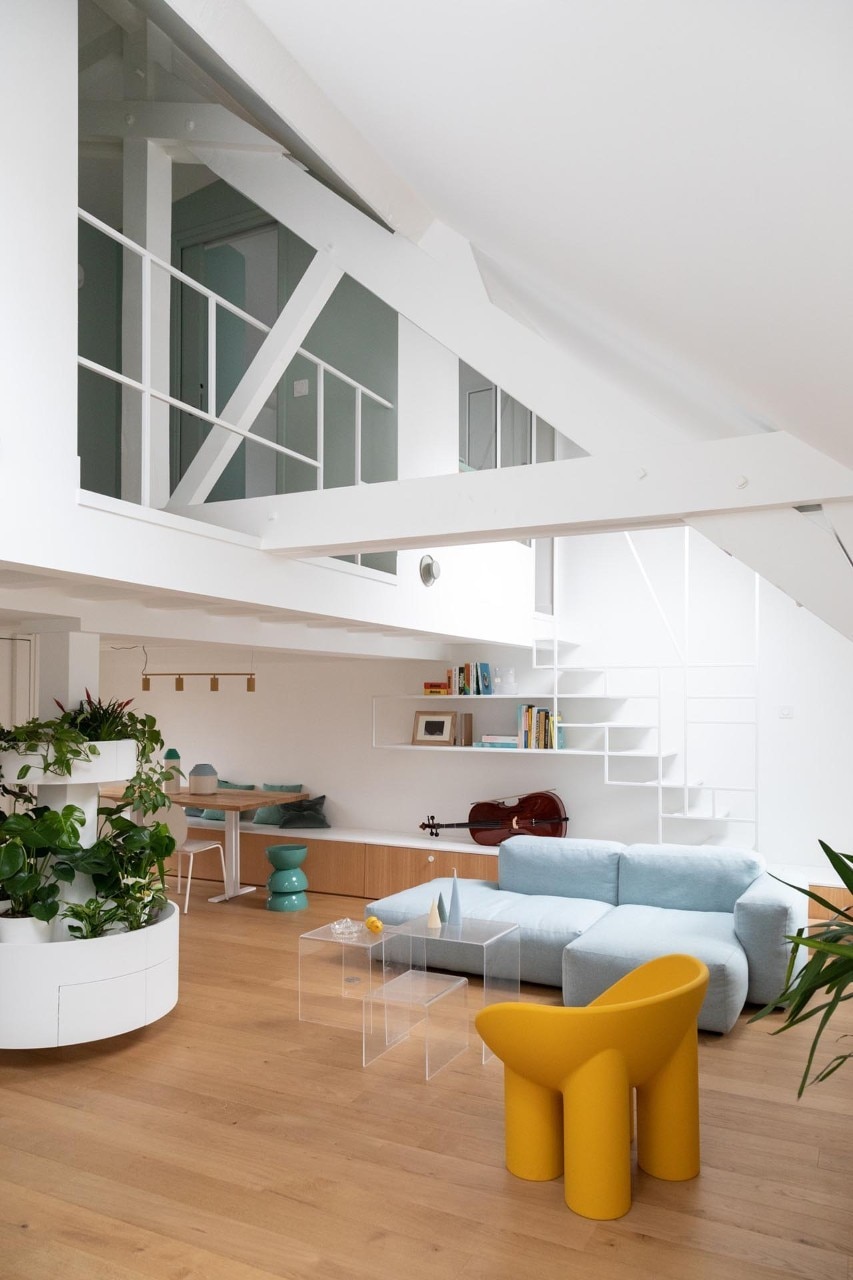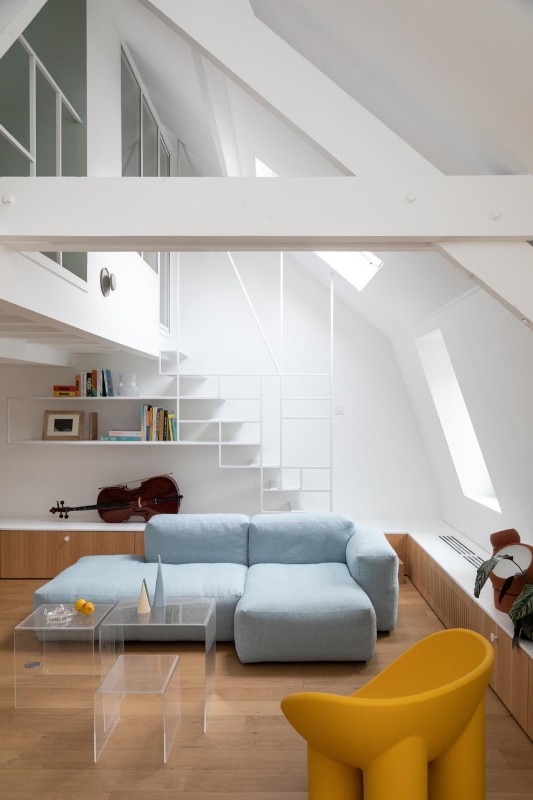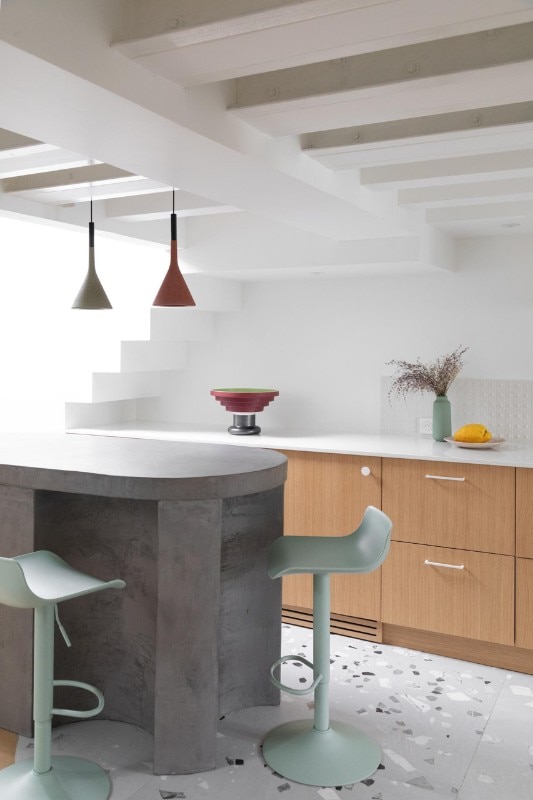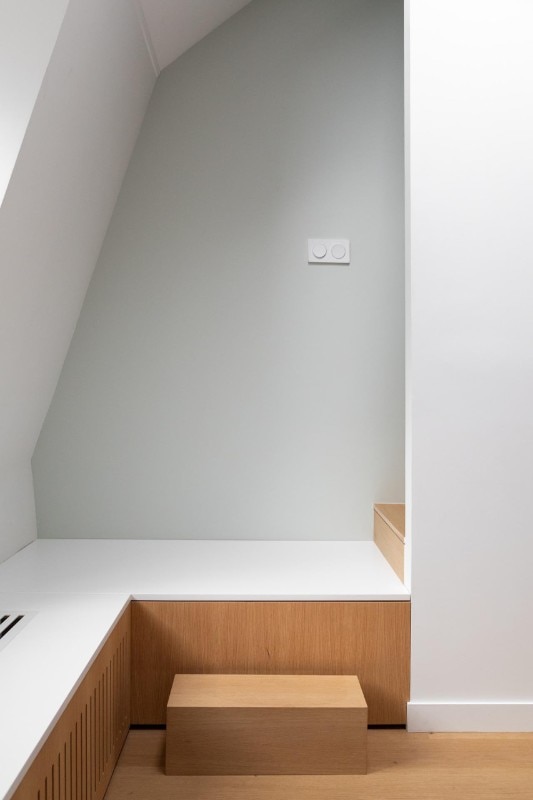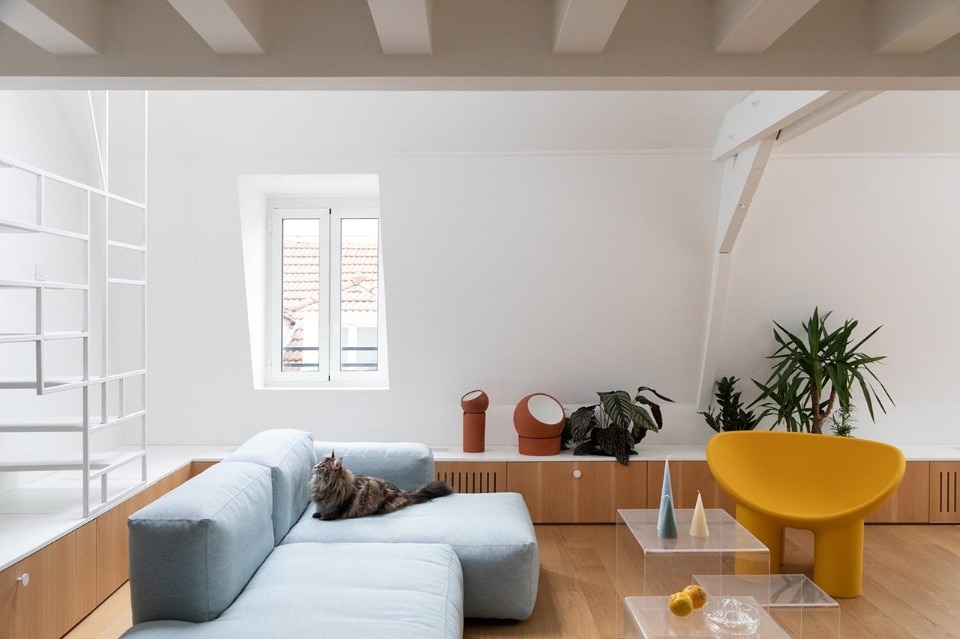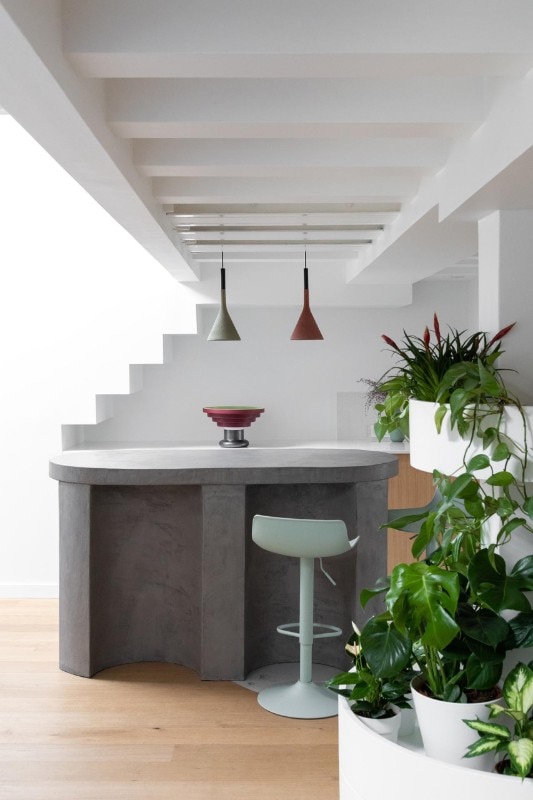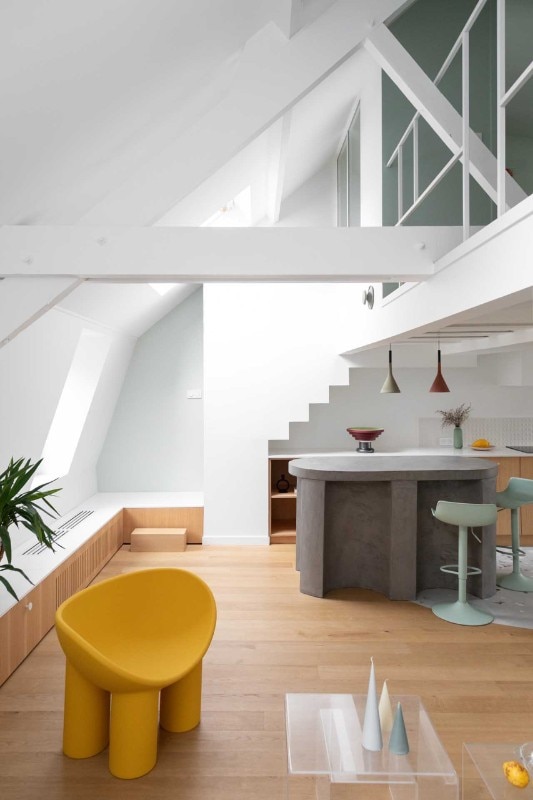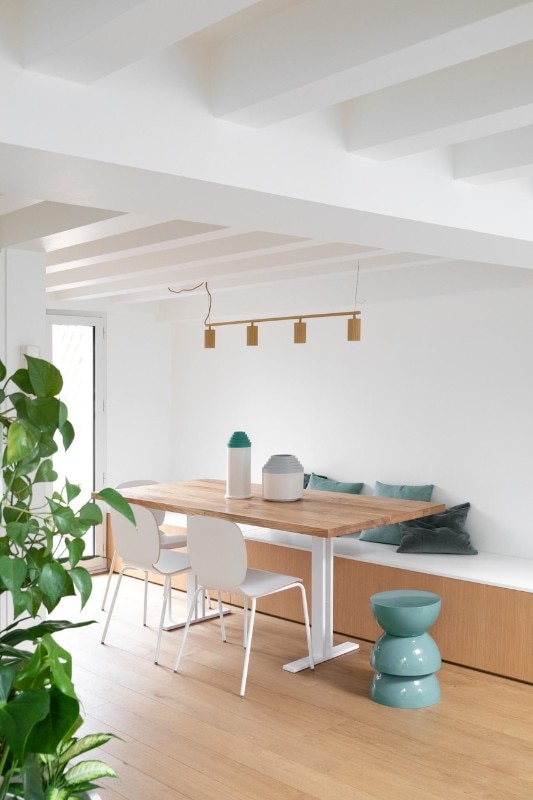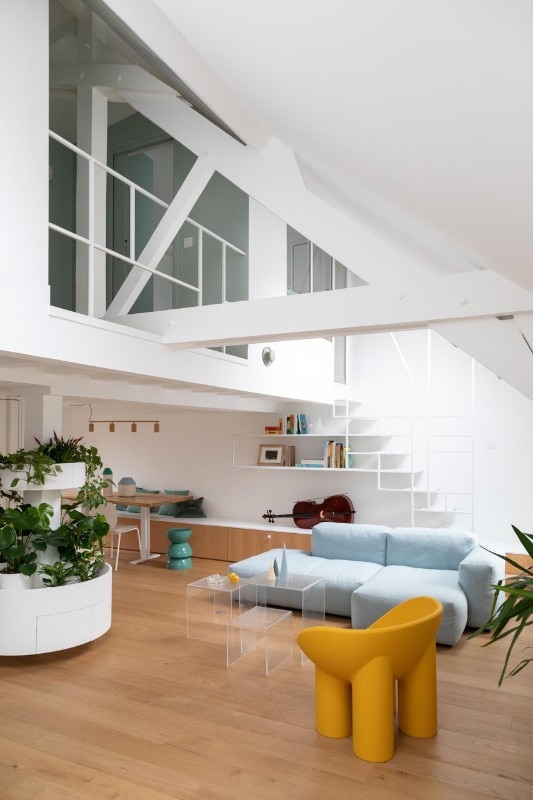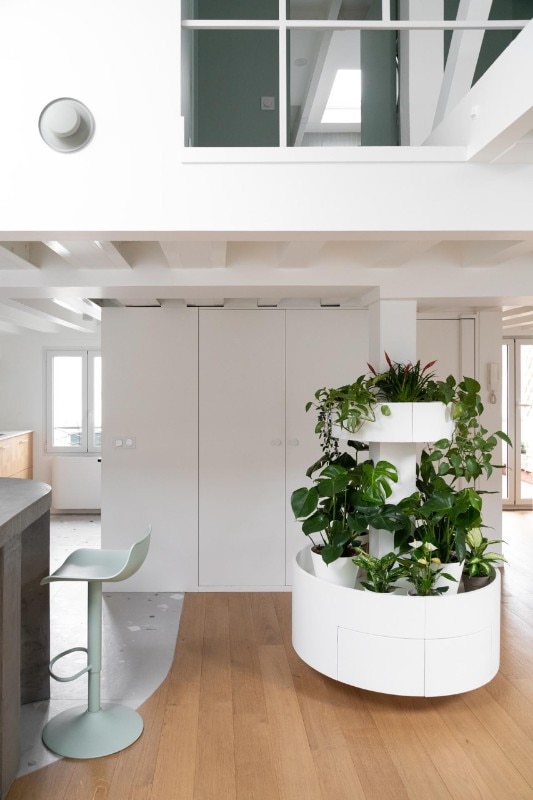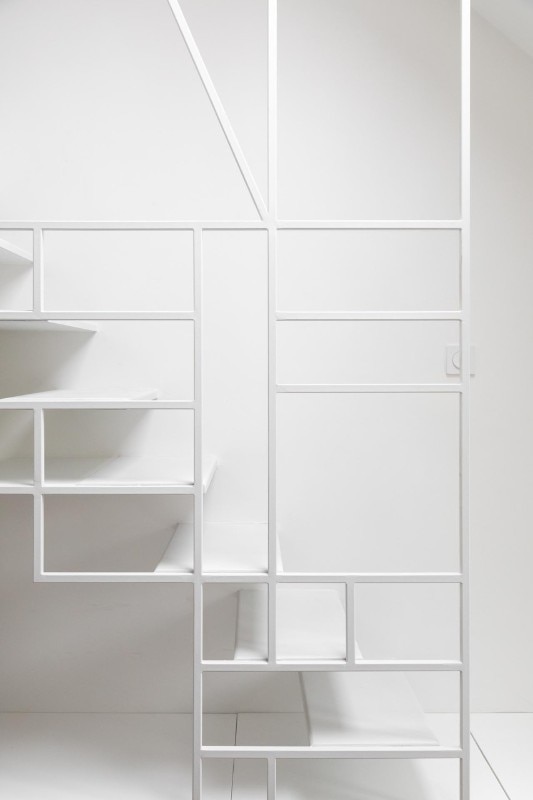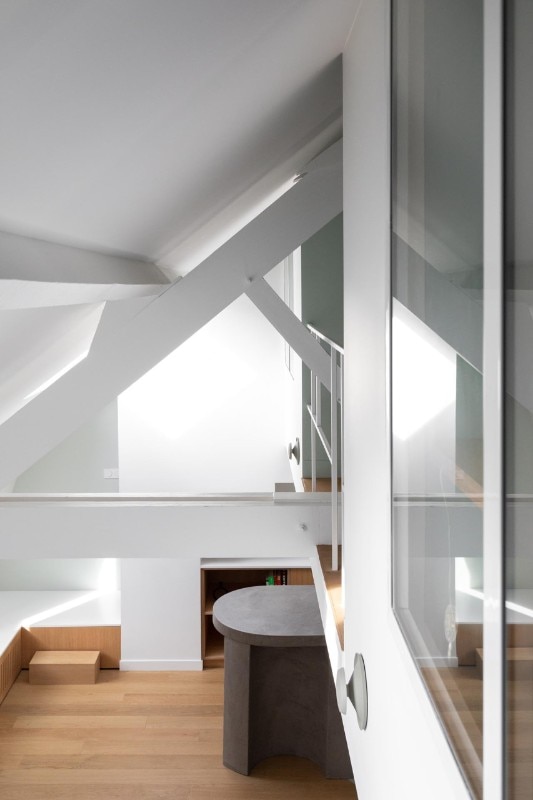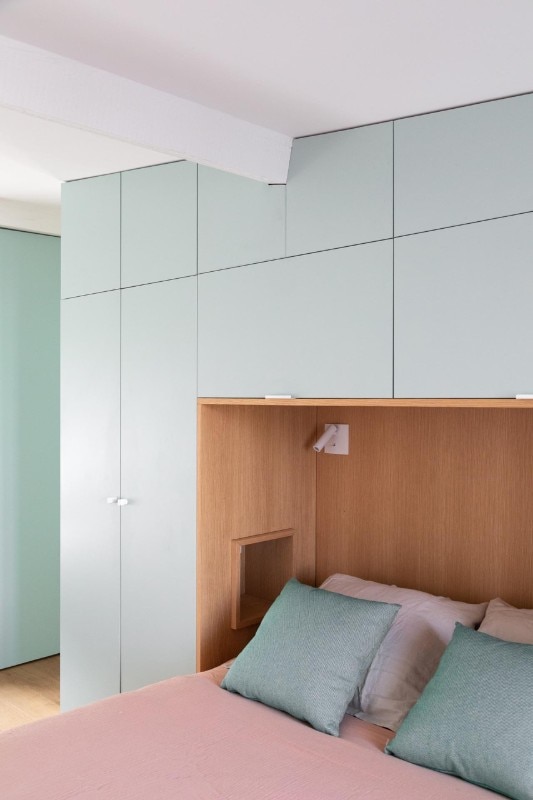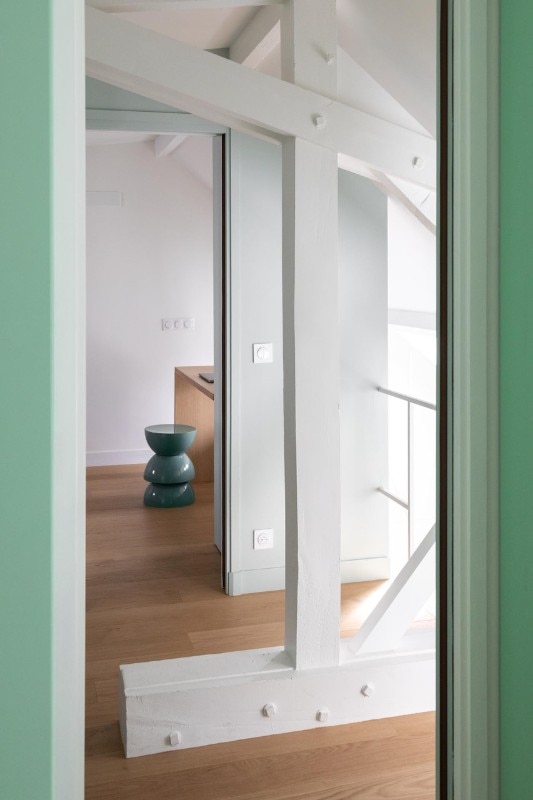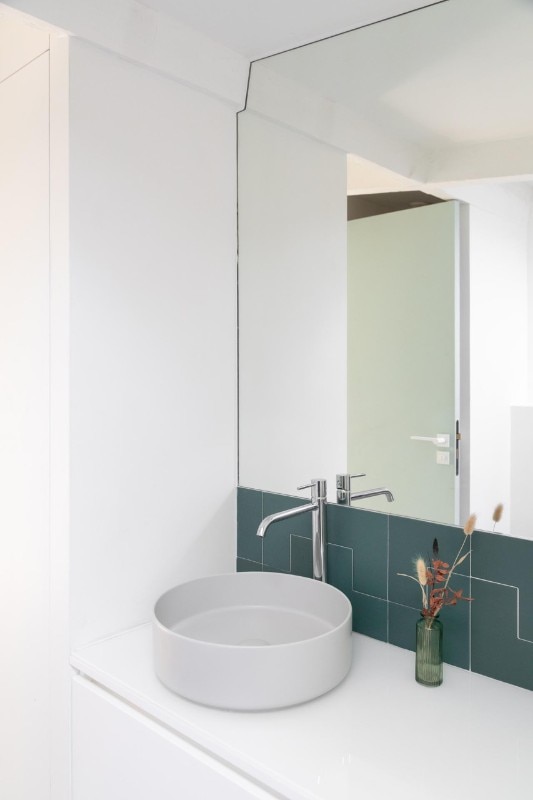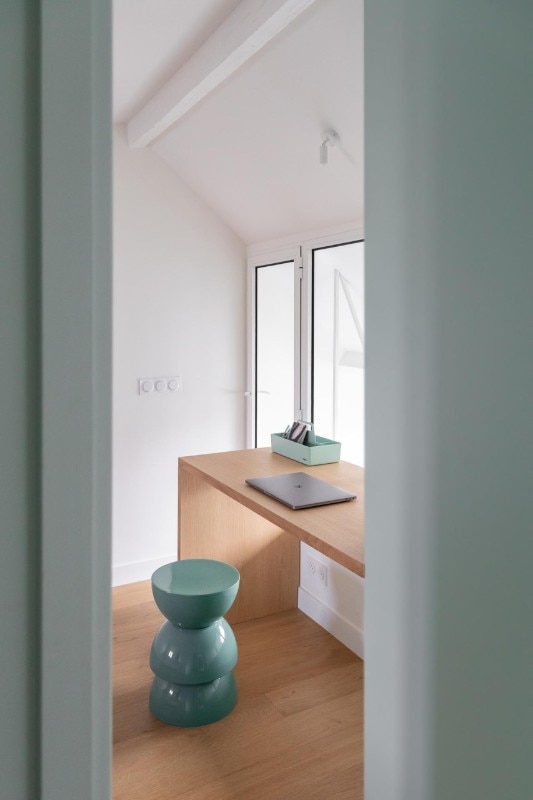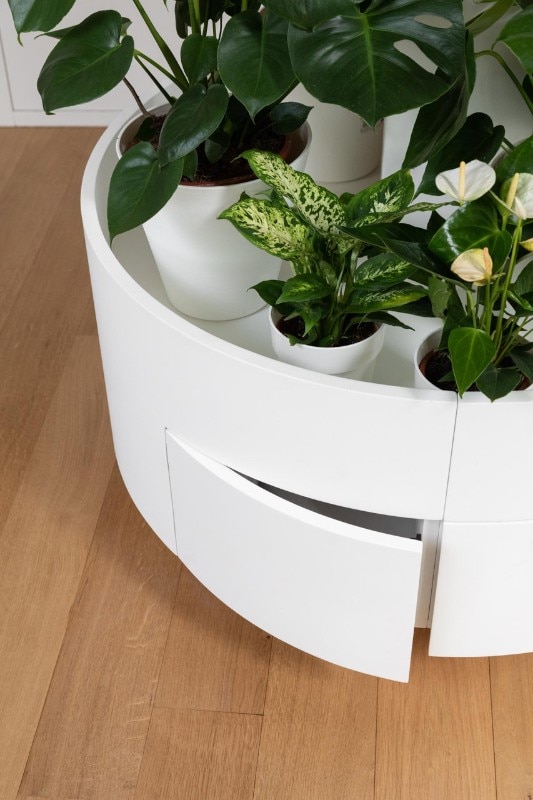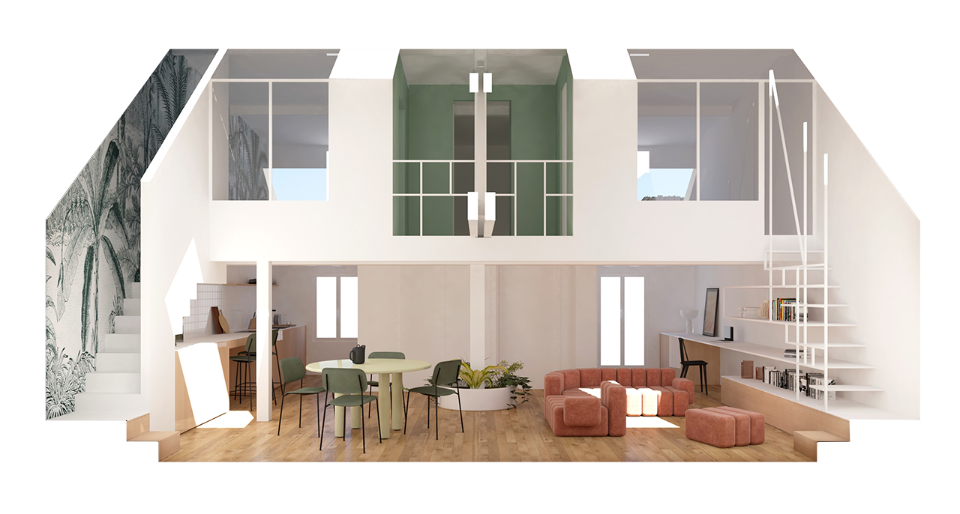Rue de Lappe in Paris remains an iconic address. Just a stone's throw from Place de la Bastille — the quintessential stage of the French Revolution — this old cobblestone street, historically tied to the activities of blacksmiths and tinsmiths, and shadowed by the petty dealings of the underworld, has transformed since the early 20th century into a hub for popular entertainment among the city's working class. Over the decades, dance halls and cabarets gave way to the venues of the '80s and '90s, the epitome of trendy Bastille, gradually overtaken by gentrification. Now a tourist destination, Rue de Lappe retains some of its original charm, capable of seducing those who, while craving peace, seek a more intimate Paris with a historic working-class and artisanal identity.
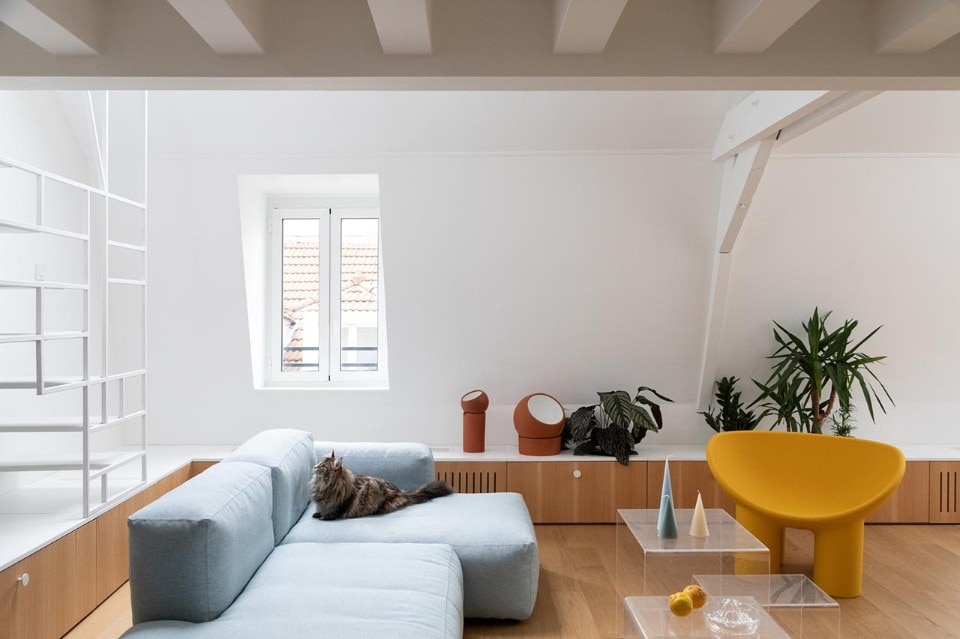
It is among the rooftops of Rue de Lappe that Studio Abaco, founded in Paris by two Italians, Alice Braggion and Alessandro Carabini, reimagines a duplex in a historic building on the street, creating a small haven away from the hustle and bustle.
Redefining the spatial layout lies at the heart of the design intervention. In the original layout, the staircase placed in the center of the living room divided the living area into two blocks, compromising functionality and natural light. This inspired an idea that, borrowing a term from the genius loci, could be described as “revolutionary” for a rather small apartment: multiplying the staircases and relocating them along the side walls, giving each of the two upstairs bedrooms its own dedicated staircase.
Such reimagined placement is accompanied by an organic redesign of living space elements: one staircase discreetly integrates into a panel and then merges with the kitchen furniture block, while the other, more exposed, features a light, airy design with a metal grid railing. In between, the space breathes freely, enabling smoother circulation. By gaining independence, the two bedrooms adopt a symmetrical layout while remaining interconnected via access to the shared bathroom. Glass walls enhance their brightness, harmoniously incorporating the exposed roof trusses.
As often happens in old Parisian apartments, custom furniture addresses the non-standard features of the space and plays with materials – here, parquet, oak wood, terrazzo, and concrete – to create a harmonious yet original domestic identity.


